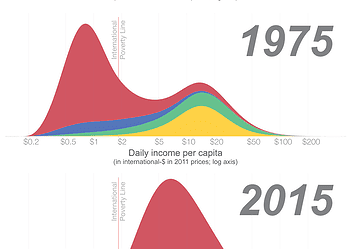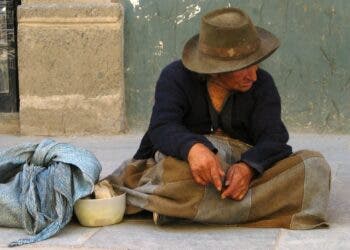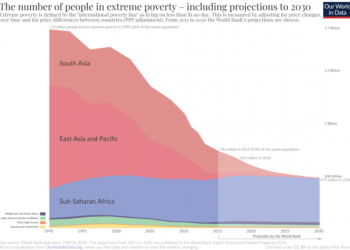Field experiments involving thousands of people living in chronic poverty in rural Bangladesh showed that their socioeconomic status is not mainly the product of their capabilities or attitudes. These people want to work and earn more, but they’re stuck in a poverty trap that is binding in itself and doesn’t allow poor people to escape it. However, a new study shows there’s a way out, with a one-time, well-placed capital boost helping people accumulate assets that allow them to climb out of poverty.

“The poor in these contexts are not unable to take on more productive employment, they simply lack the productive assets to do so,” says Clare Balboni, an assistant professor of economics at MIT and co-author of the new study that appeared in The Quarterly Journal of Economics.
Balboni and colleagues analyzed data from an antipoverty program run by a major NGO in Bangladesh, which covered 6,000 poor households. Half of these households were selected at random and offered a one-time asset transfer worth the equivalent of about USD500, along with training and support in 2007, while the other half received no intervention and served as a control group. Researchers from the BRAC NGO performed follow-up surveys of these households roughly every two years until 2018.
Just four years after receiving that single capital influx — which in most cases amounted to a single cow — earnings increased by 37%, consumption rose by 10%, the ownership of household durables (i.e. furniture, cooking ware, appliances, etc.) increased by 110%, and extreme poverty (those earning less than $1.25/day) declined by 15% compared to the control group.
These striking results strengthen the notion that one-time anti-poverty interventions, which have gained traction over the last 15 years, really do work. But why exactly?
The MIT researchers explain that the villages in Bangladesh basically have two modes of wealth distribution: some are very poor and have few if any assets, while some have significantly more. Those who received the $500 asset found themselves in the middle of these two levels — but they would not stay in this limbo for too long.
Before acquiring their new cow, most of the members of the household were underemployed, earning meager income as wage laborers. But after the intervention, the members of the household devoted more time to livestock rearing and agriculture. Basically, these people worked more, not less, once they acquired their capital-producing assets. Furthermore, the limbo between the two levels is more of a threshold rather than a gap. Those who passed this threshold gained more income and wealth over time, setting them on a path out of the poverty trap, while those below the threshold were stuck being poor.
“The poor are trapped in these occupations as a result of the fact that they are born poor,” Balboni said in a statement.
Another field experiment led by MIT antipoverty researchers, this time in India, came to similar conclusions. After receiving livestock and professional counseling, people in rural West Bengal who lived on less than $1.35 in 2018 were able to increase their incomes by 30% compared to those who received no intervention.
Poverty begets poverty, in the sense that current poverty is itself a direct cause of poverty in the future. Taken together, the findings show that relatively large transfers of assets help create new job opportunities for the poor, providing an escape ramp out of poverty.






